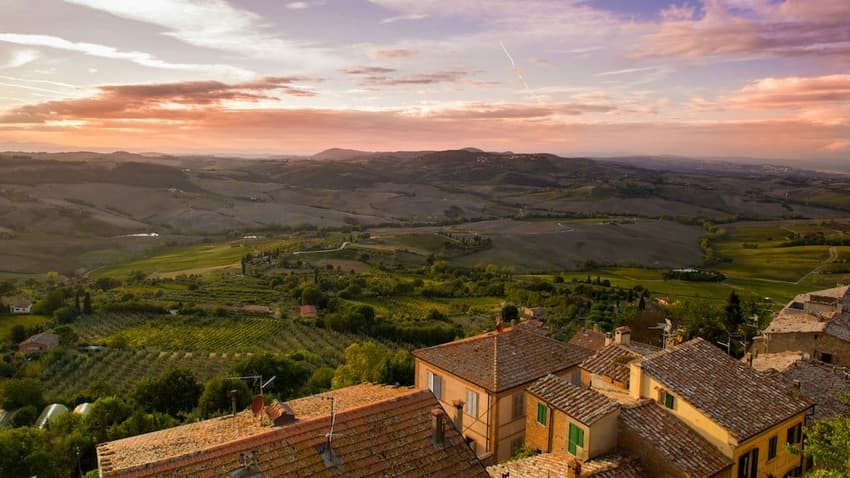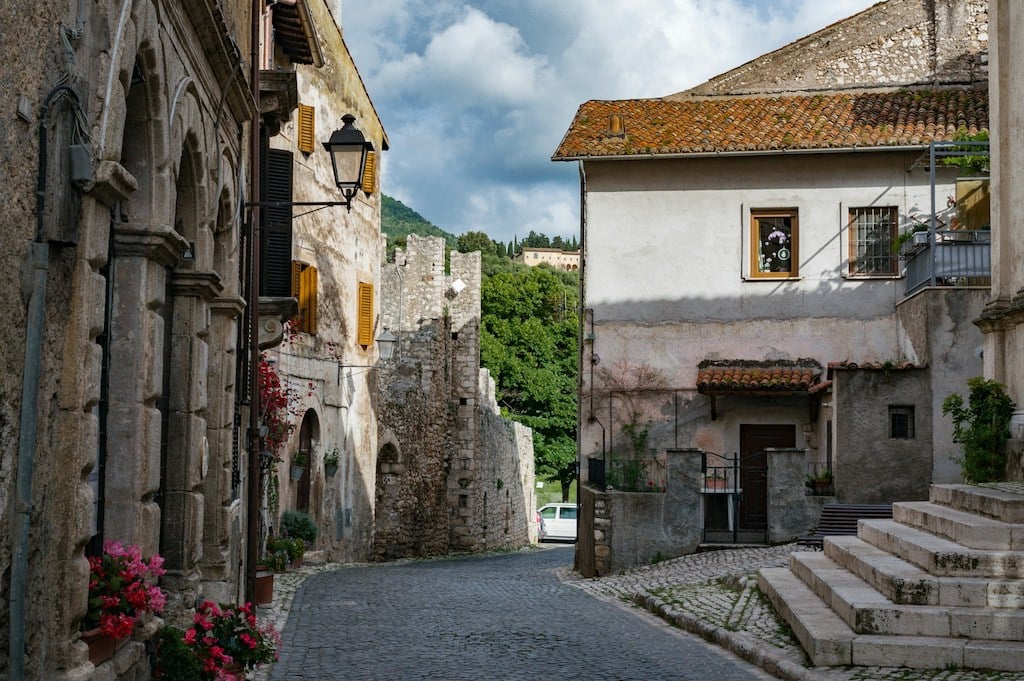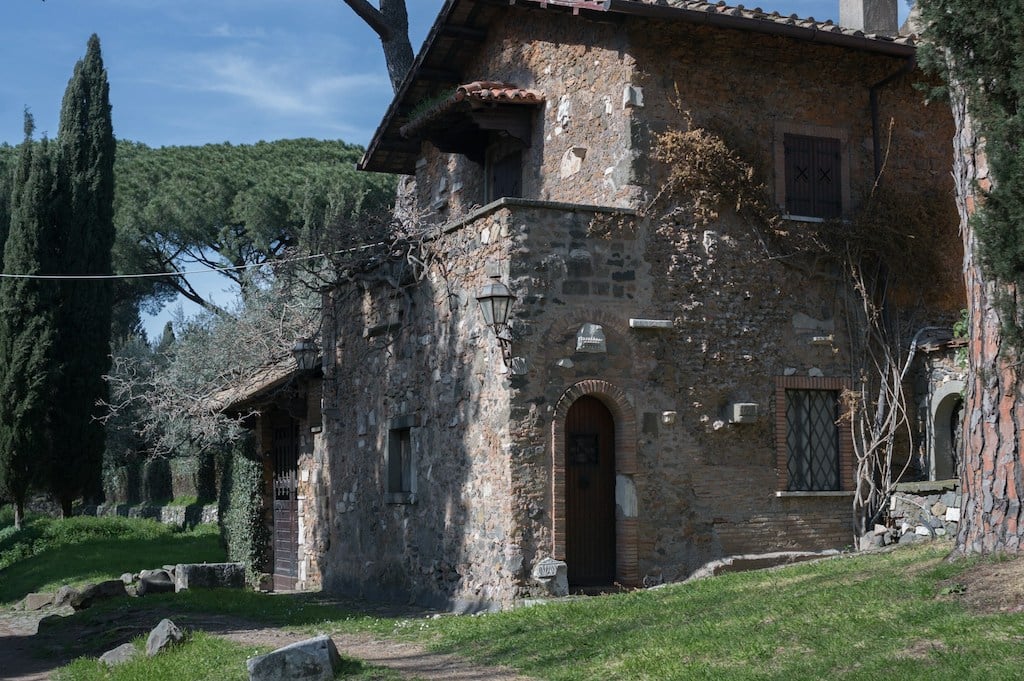Six things to know about Italy’s one-euro homes

Italy's one-euro home schemes remain popular with foreign buyers - but it's important to familiarise yourself with some basic information before you dive in.
Since Salemi in Sicily became the first Italian town to hit on the idea of selling off abandoned homes for one euro over a decade ago, the trend has spread like wildfire throughout the country.
Such arrangements are mutually beneficial, the idea goes, with small towns saving themselves from depopulation and passing on renovation costs to foreign buyers, who in turn find the Italian holiday or retirement home of their dreams for next to nothing.
But it's important to be clear-eyed about exactly what you're getting into when entering into one of these schemes.
1. You (almost certainly) won't be in a city centre
If you're looking for some peace and quiet in a remote location, a one-euro home might be just what you're looking for - but don't expect to find one in a bustling Italian town or city.
The reason these properties are being sold off for one euro in the first place is because almost all of them are in underpopulated rural villages at risk of becoming ghost towns.
READ ALSO: MAP: Where in Italy can you buy homes for one euro?
One notable exception is the Pugliese city of Taranto, which began selling one-euro homes in 2020. However as the site of a major steel works, Taranto struggles with high levels of pollution, and isn't most foreign buyers' dream destination.

One-euro homes tend to be in remote locations. Photo by Luca Pennacchioni on Unsplash
2. They end up costing a lot more than one euro
An entire home for one euro might sound good to be true - and if one euro is all you're prepared to invest, it almost certainly is.
Most one-euro homes are borderline dilapidated and and require major renovation in order to become habitable again.
READ ALSO: 'Italy's one-euro homes cost a lot more than one euro - but can be worth it'
Some town councils require an up front commitment of ten or 20 thousand euros in order to put in an offer. That doesn't mean it isn't worth it - after all, a 20,000 euro house is still a lot cheaper than most properties you'd find back home.
If renovating a property from scratch sounds like more hassle than it's worth, however, you might be better off just buying a cheap Italian home that's move-in ready.
3. You'll want to make sure your back's covered
It's the stuff of nightmares: you spend your savings renovating a property just to have it snatched away from you at the last moment.
That's what happened to Maria and Peter Jansen, a retired Dutch couple who spent two years renovating an abandoned farm in Sicily at a cost of 80,000 euros, only for the original owner's Canadian descendent to turn up at very end waving an ownership deed that proved it was hers.
Of course this kind of nightmare scenario is hardly common, but the Jansens' experience shows it's not impossible.
READ ALSO: ‘We bought and renovated a one-euro home in Italy - then had to give it back’

The countryside around Enna, Sicily, where the Jansens bought their dream home. Photo: Maria and Peter Jansen
To protect yourself, it's advisable to seek out your own independent notaio or notary (not one recommended by the seller's real estate agency) who can conduct all the proper checks and review the catasto, or land registry documents - as well as taking out the best insurance you can find.
READ ALSO: How to avoid hidden traps when buying an old property in Italy
4. It might take longer than you think to renovate
Once you've bought your one-euro home, you'll want to get started on the renovation as soon as possible - but here's where you'll need to cultivate some patience.
A post-pandemic home renovation subsidy scheme introduced by the Italian government in 2020 to kickstart the economy had the unintended consequence of causing major delays with building works, including for people who had committed to renovating their one-euro properties.

Renovating an Italian home might not be as straightforward as you imagine. Photo by Luca Pennacchioni on Unsplash
The scheme, which allowed homeowners to reclaim up to 110 percent of the costs of their property renovation back from the government, proved hugely popular, booking up building contractors months in advance and leading to a shortage of construction materials.
Though the scheme is now winding down and is no longer open to new applications, the backlog is still affecting renovations, and you should be prepared for it to take some time to find a contractor.
5. It could(!) be the answer to your money problems
Buying a one-euro home probably isn't going to be a money maker: they tend not to be in tourist destinations where you can easily open a B&B or holiday rental, or in locations where most long-term residents want to live.
But if you're realistic in your expectations, and particularly if you're looking for a cheap - but not quite one-euro - property, this might just be a way to start a new, low-cost life without rent or mortgage payments.
READ ALSO: My Italian Home: 'We bought the cheapest house in Piedmont and live mortgage free'
That's what happened for Lisa Chiodo and her family, who in 2013 relocated from Australia to rural Piedmont and bought the cheapest fixer-upper they could find for 8,000 euros.
With a further 6,000 euros to buy the adjoining property and a modest outlay of 14,000 euros on renovations that they mostly carried out themselves, they now live in the house mortgage-free.

6. You should expect to hang on to it for a while
You might spend thousands and lavish your time and creative energies on your new home: but that doesn't mean it'll be easy to sell on when you're done, or even that you'll make a profit doing so.
The supply of remote properties for sale in Italy vastly exceeds the demand from potential buyers, which is why there are so many cheap and one-euro homes available in the first place.
Italians tend to prefer new builds so they don't have to worry about upkeep, so for the most part you'll likely be restricted to foreign buyers.
That doesn't mean a one-euro home isn't be a good deal if you're looking for a retirement property, a holiday home or somewhere from which to work remotely: just think of it as a long-term investment in your own enjoyment rather than a financially lucrative investment property.
Thinking of snapping up a bargain Italian property? See more in The Local's one-euro homes section.
Comments
See Also
Since Salemi in Sicily became the first Italian town to hit on the idea of selling off abandoned homes for one euro over a decade ago, the trend has spread like wildfire throughout the country.
Such arrangements are mutually beneficial, the idea goes, with small towns saving themselves from depopulation and passing on renovation costs to foreign buyers, who in turn find the Italian holiday or retirement home of their dreams for next to nothing.
But it's important to be clear-eyed about exactly what you're getting into when entering into one of these schemes.
1. You (almost certainly) won't be in a city centre
If you're looking for some peace and quiet in a remote location, a one-euro home might be just what you're looking for - but don't expect to find one in a bustling Italian town or city.
The reason these properties are being sold off for one euro in the first place is because almost all of them are in underpopulated rural villages at risk of becoming ghost towns.
READ ALSO: MAP: Where in Italy can you buy homes for one euro?
One notable exception is the Pugliese city of Taranto, which began selling one-euro homes in 2020. However as the site of a major steel works, Taranto struggles with high levels of pollution, and isn't most foreign buyers' dream destination.

2. They end up costing a lot more than one euro
An entire home for one euro might sound good to be true - and if one euro is all you're prepared to invest, it almost certainly is.
Most one-euro homes are borderline dilapidated and and require major renovation in order to become habitable again.
READ ALSO: 'Italy's one-euro homes cost a lot more than one euro - but can be worth it'
Some town councils require an up front commitment of ten or 20 thousand euros in order to put in an offer. That doesn't mean it isn't worth it - after all, a 20,000 euro house is still a lot cheaper than most properties you'd find back home.
If renovating a property from scratch sounds like more hassle than it's worth, however, you might be better off just buying a cheap Italian home that's move-in ready.
3. You'll want to make sure your back's covered
It's the stuff of nightmares: you spend your savings renovating a property just to have it snatched away from you at the last moment.
That's what happened to Maria and Peter Jansen, a retired Dutch couple who spent two years renovating an abandoned farm in Sicily at a cost of 80,000 euros, only for the original owner's Canadian descendent to turn up at very end waving an ownership deed that proved it was hers.
Of course this kind of nightmare scenario is hardly common, but the Jansens' experience shows it's not impossible.
READ ALSO: ‘We bought and renovated a one-euro home in Italy - then had to give it back’

To protect yourself, it's advisable to seek out your own independent notaio or notary (not one recommended by the seller's real estate agency) who can conduct all the proper checks and review the catasto, or land registry documents - as well as taking out the best insurance you can find.
READ ALSO: How to avoid hidden traps when buying an old property in Italy
4. It might take longer than you think to renovate
Once you've bought your one-euro home, you'll want to get started on the renovation as soon as possible - but here's where you'll need to cultivate some patience.
A post-pandemic home renovation subsidy scheme introduced by the Italian government in 2020 to kickstart the economy had the unintended consequence of causing major delays with building works, including for people who had committed to renovating their one-euro properties.

The scheme, which allowed homeowners to reclaim up to 110 percent of the costs of their property renovation back from the government, proved hugely popular, booking up building contractors months in advance and leading to a shortage of construction materials.
Though the scheme is now winding down and is no longer open to new applications, the backlog is still affecting renovations, and you should be prepared for it to take some time to find a contractor.
5. It could(!) be the answer to your money problems
Buying a one-euro home probably isn't going to be a money maker: they tend not to be in tourist destinations where you can easily open a B&B or holiday rental, or in locations where most long-term residents want to live.
But if you're realistic in your expectations, and particularly if you're looking for a cheap - but not quite one-euro - property, this might just be a way to start a new, low-cost life without rent or mortgage payments.
READ ALSO: My Italian Home: 'We bought the cheapest house in Piedmont and live mortgage free'
That's what happened for Lisa Chiodo and her family, who in 2013 relocated from Australia to rural Piedmont and bought the cheapest fixer-upper they could find for 8,000 euros.
With a further 6,000 euros to buy the adjoining property and a modest outlay of 14,000 euros on renovations that they mostly carried out themselves, they now live in the house mortgage-free.

6. You should expect to hang on to it for a while
You might spend thousands and lavish your time and creative energies on your new home: but that doesn't mean it'll be easy to sell on when you're done, or even that you'll make a profit doing so.
The supply of remote properties for sale in Italy vastly exceeds the demand from potential buyers, which is why there are so many cheap and one-euro homes available in the first place.
Italians tend to prefer new builds so they don't have to worry about upkeep, so for the most part you'll likely be restricted to foreign buyers.
That doesn't mean a one-euro home isn't be a good deal if you're looking for a retirement property, a holiday home or somewhere from which to work remotely: just think of it as a long-term investment in your own enjoyment rather than a financially lucrative investment property.
Thinking of snapping up a bargain Italian property? See more in The Local's one-euro homes section.
Join the conversation in our comments section below. Share your own views and experience and if you have a question or suggestion for our journalists then email us at [email protected].
Please keep comments civil, constructive and on topic – and make sure to read our terms of use before getting involved.
Please log in here to leave a comment.